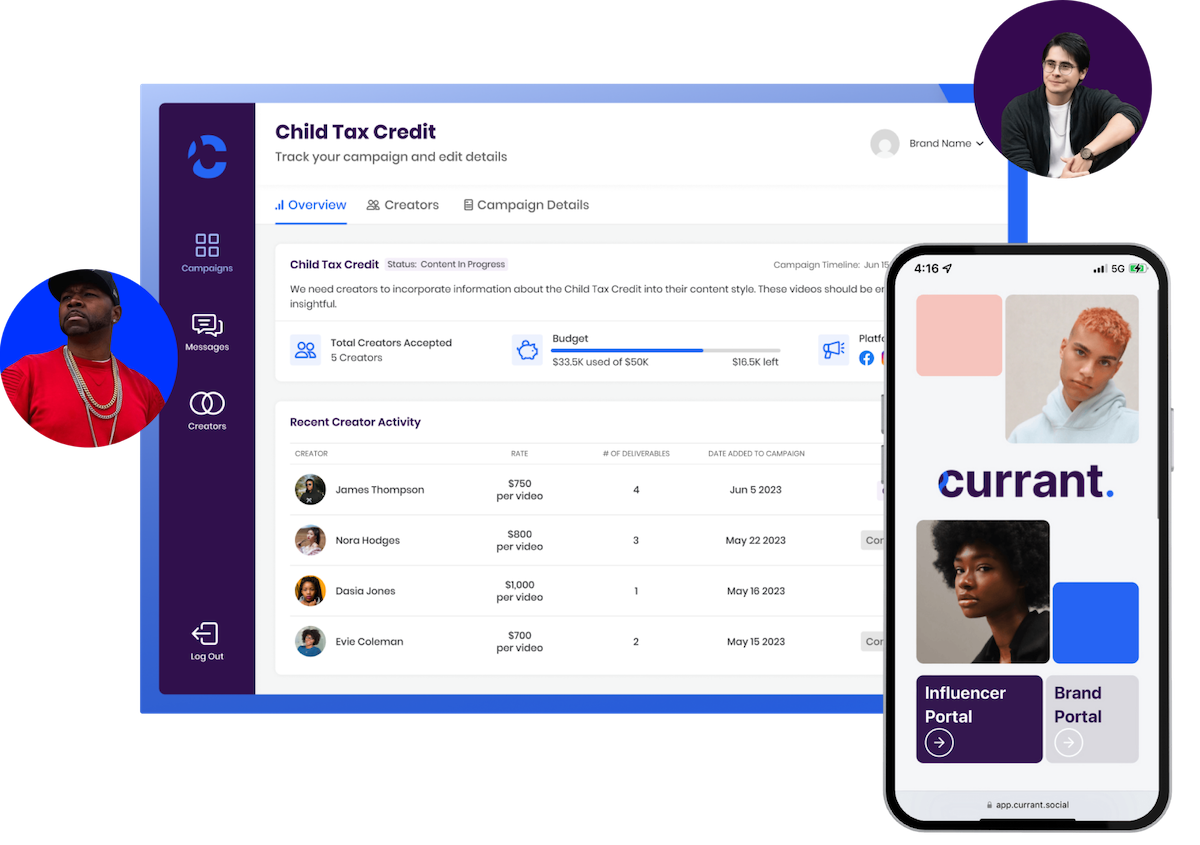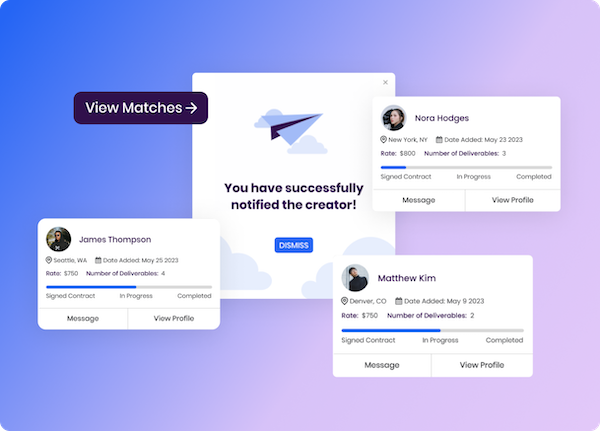Sign up for our newsletter for updates + previews of new platform features!

Find mission aligned creators for your campaign or cause.
We help nonprofits, impact organizations & issue focused organizations collaborate with creators to reach audiences more effectively.







How it Works
Step 1
Outline Your Goals
We know you have a lot of great ideas but not a lot of time. Our two step process allows for you to quickly outline your campaign, goals and the communities you’re trying to reach.
Step 2
Review Your Matches
Let us work our magic! Then it’s your turn to review your personalized creator matches with information on their issue area, audience, and more.

Step 3
Run Your Campaign
We have your back! Let us make it easy for you to manage your creator campaigns with automating contracts, payments, and more all in one place. This way, you can focus on what matters most- building strong relationships with your creators.
Get Involved

Join some of the country’s largest nonprofits & impact organizations in working with Social Currant
Leverage years of expertise and an impact focused creator network.
Spend less time worrying about finding creators and more time focused on working with them
Reach a wider audience, leveraging the power of social media and influencers.
ABOUT US
From D.C. to across the world!
We’re a creator led platform and managed service focusing on making a difference through the power of social media. Once described by the New York Times as “Only recently able to buy alcohol” This Gen Z led company is on a mission to empower young people and issues we care about.
Meet The Team
Ways to Apply Social Currant
Persuasion & Narrative Change
Identify creators from the communities you’re trying to reach and have them share their lived experiences around your issues to change narrative and persuade audiences.
Education & Awareness
Identify creators who go to sources of information and work with them to spread key information in rapid response moments.
Activation
Find creators good at driving their followers to take action and work with them to activate petition signatures, calls to representatives and more.
Ads & Other Comms Strategies
Identify creators who create high converting content and work with them to produce ads and other forms of creative.
Build an integrated strategy
Build an integrated communications strategy that leverages creators to create content, serve as strategic partners, talk to press and a lot more through our platform.









